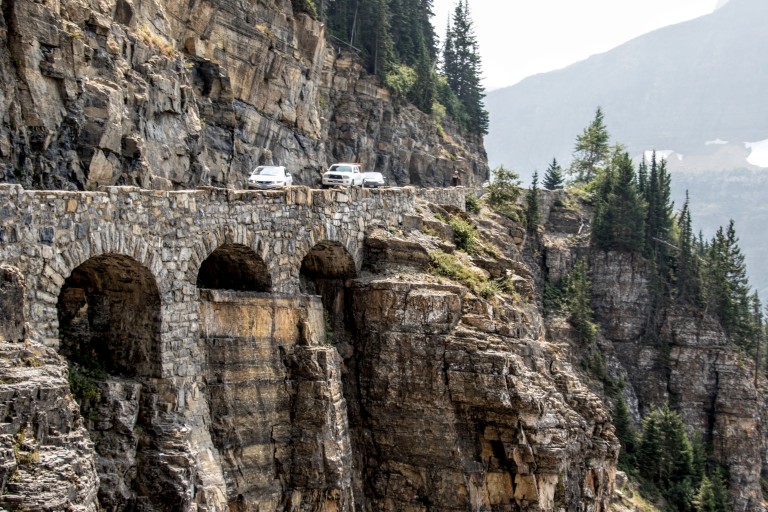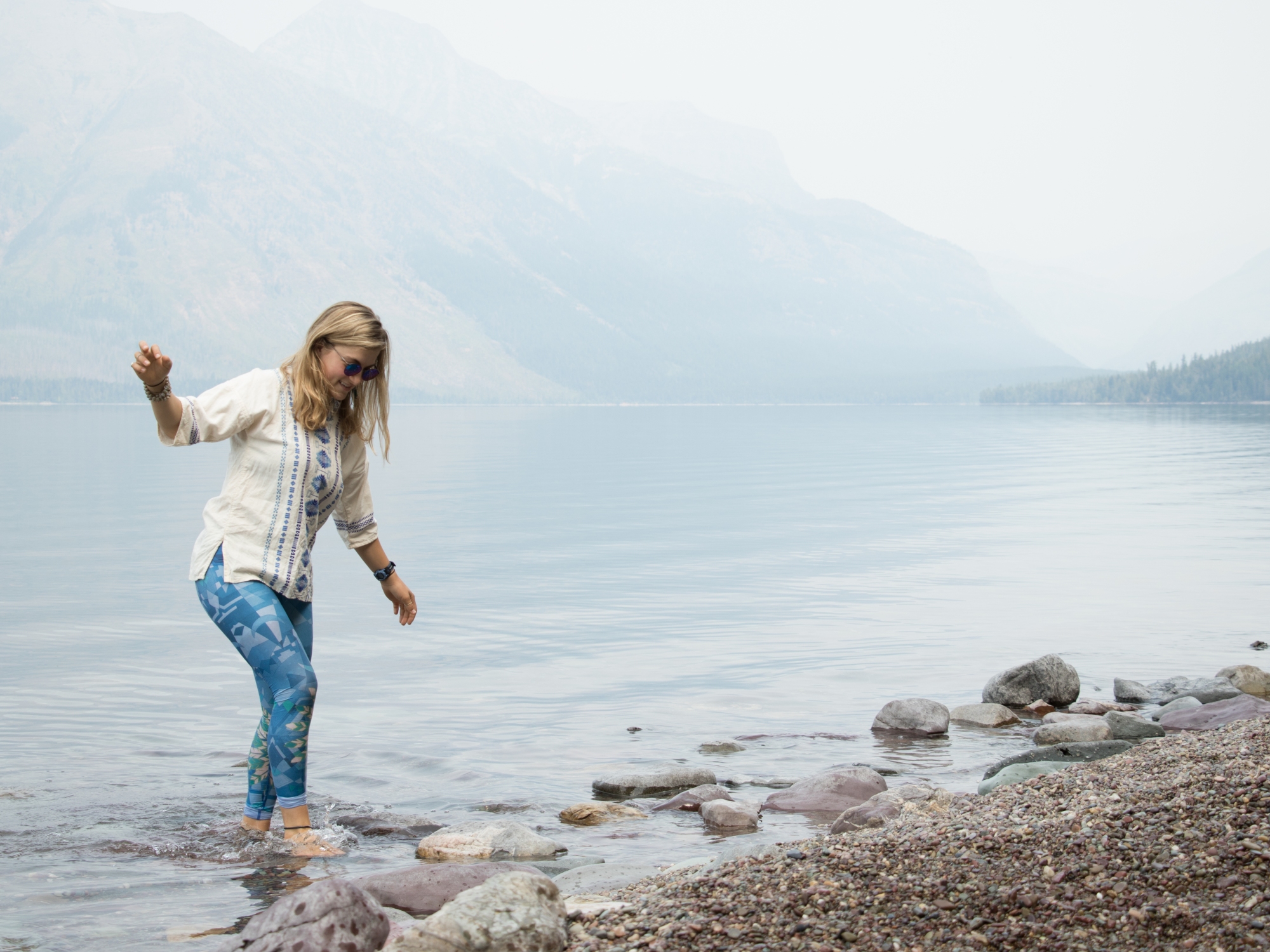As a person who values wilderness for the solitude and sees solitude as imperative to wilderness, I avoid national parks as a plague. I know better than to look for solitude in most of them.
But this summer, work and travel has sent me through Grand Teton, Yellowstone, and Glacier National Park.
And each time I travel through these parks, the overrun roads and trails make me question the purpose of preserving these wild lands.
Are we not just corralling some of our most precious natural wonders to be exploited by tourism?
And if we are selling out some of the earths wildness to educate people in the hope that they will suddenly be imparted with environmentalism and a sense of stewardship for wilderness so that on the next ballot they vote, with the one trip they had to Yellowstone in mind, for preservation – this seems a foolhardy way to move our nation towards conservation.
And if we are paving path ways where none existed and expanding roads to four lane scenic highways to accommodate millions, are we are just expanding easy access to people privileged enough to afford a trip to a national park?
Who are these public lands inaccessible to due to high campground costs and entrance fees?
When is increasing access too much?
When do we draw the line and how?
Are the people who visit these wild places really getting an impression of wild lands and why they are important or just epic GoPro photos for their social media?
There was a time when a piece of land reaching the status of national park meant it would be the most preserved, but there was a price to pay for the preservation. As a due to the American people who already profit from the overuse of natural resources, these lands which never belonged to humans pay with huge numbers of tourism.
These questions ran through my head as we pulled through the entrance gates at Glacier National Park, on Aug. 13 2017. It wasn’t even a busy day for the park, campgrounds had a few spots left and it was past 11 a.m. They usually fill up by 8 a.m.

Smoke hung in the air, covering the monolith mountains. We were on a quick weekend drive on the Going-to-the-Sun Road. As we wound up the impressive road, the mountains and glaciers towered in the sky. They made me feel puny in my small Tacoma. The road itself was a remarkable piece of pavement that made my stomach turn as we drove cliff side after cliff side.
Every time we tried to pull out to look far below into the valley floor, the pullouts were full. A few more later and we found a spot to stare at the beauty surrounding us. The sun shone brightly on the line of cars snaking under falls crashing down from a cliff wall.
The constant throbbing of people and cars began to make me feel restless. It broke the timelessness and serenity of Glacier. Below us in a cedar grove, cars overflowed from a parking lot to the shoulders on either sides of the road. I wanted to just get out of the suffocating chaos. But it was Glacier and shouldn’t I be enjoying the world wonder?

By the time we made it to Logan Pass, the feeling of being in an amusement park grew. It took 20 minutes to circle the parking lot until a spot opened. I took deep breathes trying to remember the beauty I was in.
A woman approached me about a fire down the valley. “Isn’t it scary?” she said. “Fire is natural and necessary here,” I told her.
We talked about the necessities of fire and its prevalence this summer. We even chatted about white pine and how it becomes gnarled by high altitude. She seemed interested.
The red tour buses rolled through the parking lot filled with people, sealing my feeling of being in Disney land.
We hiked the High-line trail for half a mile. Epic and cut into a cliff, the trail wound above the road. I tried to ignore the bustling below, wishing we had time to get into the isolated parts of the backcountry.
With a park this busy, I wondered if even the hard to reach parts weren’t buckling under overuse.
In the short hour, we hiked past at least 30 people. On the way out, we passed park rangers rolling a wheel chair down the trail to a person in the early stages of heat exhaustion.
I wanted out of the park, I was choking on people. Thinking about this wild sacred place enduring the impact of so many people made me sick.
But is this the price to pay for educating an America almost completely disconnected from wild places?

As we rushed out of the park to the sweet isolation of a bumpy county road, I looked around at country that felt wild like a sweet breath of air.
The whole experience left me drained. It reminded me of earlier this summer when I stood in the massive old faithful visitor’s center, staring at a wall of sponsors: blue tile plaques with ConocoPhillips and Coco-Cola Foundation included on them.
Yellowstone park was full of gas stations and places to buy plastic bottled drinks. It made sense that these companies who profited immensely from using the earth for its resources would in turn support a park that gave them more business. But wasn’t this park supposed to protect and preserve land from human impact?
I thought about this unhappy parallel while I listened to a woman demand in angrily why the park ranger could not tell her when the next geyser would explode. He tried to explain how nature is not a machine, how they could only guess.
She persisted, frustrated, asking repeatedly. I stared out the window at Old Faithful imprisoned by board walks and a humongous lodge, at the tourists walking around the geyser with brand new 100 dollar outdoor gear that might as well have had tags on it, at the thousands of dollars of camera gear slung around their shoulders, at the cars lining the parking lot, at the selfies being snapped with backs to Old Faithful, at the kids dragging behind eyes glued to phones.
Tears overwhelmed me with the tragedy of this natural wonder caged for the amusement of humans. It broke my heart to watch these people float around the park completely disconnected from their surroundings but still impacting the park with their use.
These people seemed like they would leave no different than before, hell-bent on consumerism and with no appreciation for wild land.
How could they have an appreciation for wild land when everything they saw in the national park was caged and tamed by developed trails and roads?
It left me wondering if these national parks were serving Americans much less preserving the land left in their responsibility.
As the tourism to national parks soars, we should ask ourselves if it is just another way we are exploiting the earth, if they are truly accessible to all, if they are truly protecting the land, and if they are really educating minds on the importance of preserving wild spaces.
Wild places are not an Instagram fad, but a part of our nation that is imperative to the freedom we claim.
If there are not places to return to the wild, protected from civilizations impact, then how can we be free?


I love your writing and your depth…. you’re such a beautiful person!
LikeLike
Thank you so much for your kinnd words!!!
LikeLike